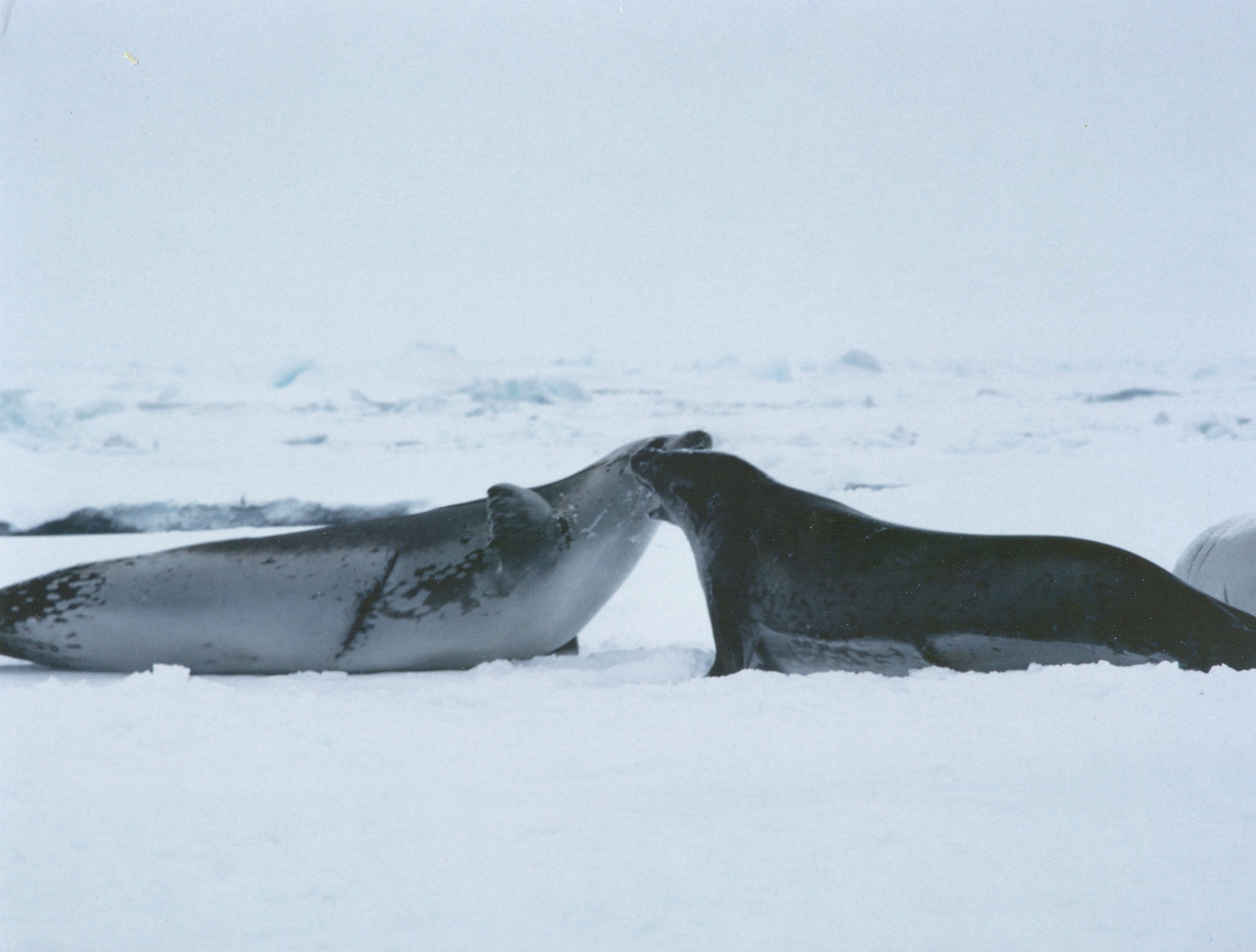
Weddell Sea crabeater seals

 Time-depth recorders were used to study the diving and haulout behavior of six crabeater seals in the marginal ice edge zone of the Weddell Sea during March 1986. Haulout patterns revealed the seals’ clear preference for diving during darkness and hauling out onto sea ice during daylight. Seals did not necessarily haul out every day; individual seals hauled out on 80–100% of days during the study period. Four general dive types were identified: 1) traveling dives, 2) foraging dives, 3) crepuscular foraging dives, and 4) exploratory dives. Nearly continual diving occurred for extended periods (about 16 h) nightly, with one individual diving up to 44 h without interruption. Foraging dives occurring during crepuscular periods were deeper than those made during the darkest hours. The authors suggest that the distinct diel pattern of dive timing and depth may be related to possible predator avoidance behavior by the seals’ principal prey, Antarctic Krill.
Time-depth recorders were used to study the diving and haulout behavior of six crabeater seals in the marginal ice edge zone of the Weddell Sea during March 1986. Haulout patterns revealed the seals’ clear preference for diving during darkness and hauling out onto sea ice during daylight. Seals did not necessarily haul out every day; individual seals hauled out on 80–100% of days during the study period. Four general dive types were identified: 1) traveling dives, 2) foraging dives, 3) crepuscular foraging dives, and 4) exploratory dives. Nearly continual diving occurred for extended periods (about 16 h) nightly, with one individual diving up to 44 h without interruption. Foraging dives occurring during crepuscular periods were deeper than those made during the darkest hours. The authors suggest that the distinct diel pattern of dive timing and depth may be related to possible predator avoidance behavior by the seals’ principal prey, Antarctic Krill.
